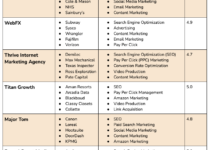Data-Driven Marketing Strategies for Pre-Tariff Sales Boom
The U.S. automotive market experienced a dramatic 38% increase in vehicle movement across all segments in April 2025, creating both opportunity and strategic challenges for dealers. This sales acceleration, driven by consumers rushing to purchase vehicles ahead of anticipated tariff-related price increases, requires informed data-driven marketing strategies backed by real-time data.
Our MarketAI platform identified approximately 341,000 pull-ahead purchases nationwide—representing sales that would typically occur later in the year. For dealership leaders, this presents a critical decision point: how to capitalize on current demand while preparing for the inevitable market correction to follow.
Dealers with access to comprehensive market analytics can identify which inventory segments are moving fastest in their region, allowing for precise allocation of marketing spend where it delivers maximum return. This data-driven approach becomes even more valuable as market conditions shift from today’s seller’s market back toward equilibrium.
Understanding Segment-Specific Performance
Not all inventory is moving equally during this sales rush. Our May 2025 Market Pulse report reveals important distinctions across vehicle categories. Luxury SUVs have seen both the largest increase in inventory and movement, while Mid-Size SUVs, Heavy–Duty Trucks, and Small Sedans are experiencing inventory drops despite substantial movement spikes. Perhaps most notably, truck segments—particularly Full-Size and Heavy-Duty models—continue to show slower turn rates compared to other vehicle types despite increased price adjustments.
This segment disparity highlights that even during a market upswing, targeted marketing strategies are more effective than broad approaches. Dealerships need to pay special attention to vehicle segments with historically slower movement.
Turning Temporary Success into Long-Term Strategy
Forward-thinking dealers are using this sales boom to position themselves advantageously for what comes next by focusing on two key areas.
Real-Time Inventory Intelligence
During market fluctuations, real-time inventory data becomes even more valuable. Granular insights that go beyond simply knowing which cars are selling can transform your approach to inventory management. Advanced data analytics can evaluate each vehicle’s potential to sell based on numerous factors including price position, color, trim, market movement, and local inventory conditions.
The current tariff situation has highlighted that real-time inventory intelligence creates significant competitive advantages. For example, data analysis of Volkswagen’s inventory revealed that while new Tiguan inventory decreased by over 84% nationwide, consumer demand remained strong—creating an unexpected strategic opening for dealers who could quickly pivot to market certified and used alternatives.
This intelligence becomes even more powerful when combined with competitive benchmarking across your market. Understanding how your pricing, inventory mix, and turn rates compare to other dealers helps you identify opportunities before your competitors. For instance, knowing which of your truck models are outperforming or underperforming the market average allows you to make more informed decisions about where to focus your marketing investments and pricing strategies as the market shifts post-tariff.
Segment-Specific Digital Marketing
With market uncertainty ahead, it’s crucial to move beyond treating your entire inventory equally. Data-driven marketing strategies allow you to direct more digital advertising dollars toward specific VINs that data indicates will face selling challenges post-surge.
Truck buyers, for example, are demonstrating different shopping patterns than other segments, making generic targeting insufficient. Advanced audience targeting capabilities can identify potential buyers based on actual shopping behavior, not just demographic assumptions.
While price adjustments may become necessary as the market settles, our data shows they aren’t sufficient on their own. Your marketing should emphasize additional value factors that differentiate your inventory—such as trim levels and incentives—that resonate with specific buyer segments.
Preparing for Post-Surge Market Realities
The current market acceleration won’t last indefinitely. The implementation of tariffs will likely lead to increased vehicle prices across all segments, more cautious consumer spending, greater emphasis on used vehicles and certified pre-owned options, and extended ownership cycles for current vehicle owners.
Looking at historical market data from previous tariff implementations helps clarify what we can expect. After the initial tariff announcements in February 2024, Average Marketed Prices surged steadily throughout March and April, reaching $50,000 before temporarily stabilizing. This pattern suggests that while dealers are currently experiencing increased movement, we should prepare for a shift as tariffs take full effect. essential for dealers to prioritize their marketing efforts strategically.
With advanced analytics platforms like MarketAI, dealerships can analyze inventory performance against local market benchmarks, identify specific vehicles needing more aggressive marketing, target actual in-market shoppers with precision, and deploy multi-channel digital campaigns that adjust in real-time based on performance.
Ready to learn more about how MarketAI can help you navigate market uncertainty and drive consistent sales? Request a free analysis, and our team will dig into your digital presence and local market to provide an in-depth look into where your strategy currently stands as well as a custom plan of attack with your top areas of opportunity.


